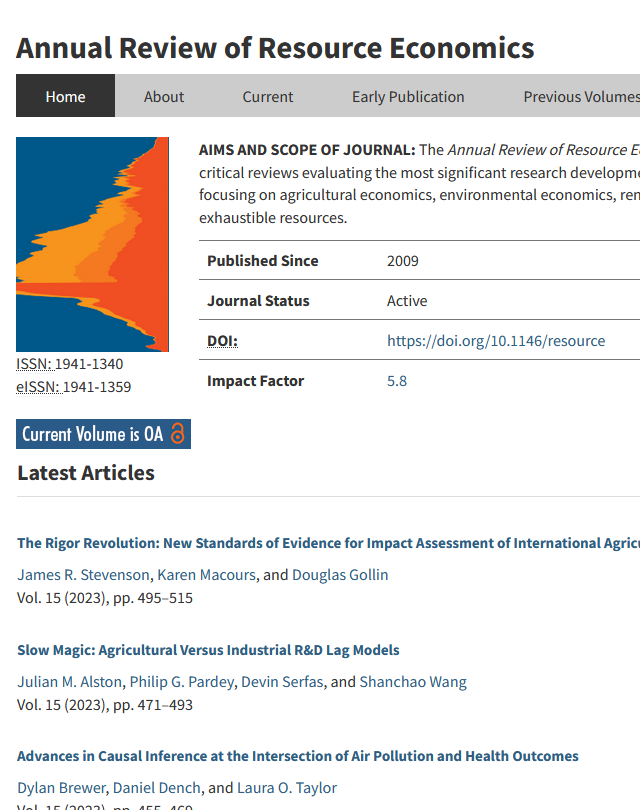1996-2019 年期间欧盟 15 个成员国农业中的影子经济之谜
IF 8.4
2区 经济学
Q1 AGRICULTURAL ECONOMICS & POLICY
Annual Review of Resource Economics
Pub Date : 2024-10-07
DOI:10.1146/annurev-resource-100622-085736
引用次数: 0
摘要
本综述的重点是农业中的影子经济(SE)。我们的研究目的是根据 1996 年至 2019 年在欧盟 15 个成员国收集的数据,对农业部门的影子经济进行实证量化。我们采用多指标多原因模型来估算这些国家的影子经济水平和发展情况。此外,我们还研究了欧盟 15 个成员国之间农业 SE 规模的差异及其对整体经济的影响。结果表明:(a) 社会经济的主要潜力在于农业补贴、税收影响、进口份额和农业要素收入;(b) 各国之间存在某些模式和差异,这可能与南北-东西分界线有关;(c) 与整体经济相比,农业中的社会经济水平更高。本综述强调了衡量农业中社会经济因素的潜力,同时也认识到当前方法的局限性。建议包括方法多样化、定义国际标准化和加强理论基础。此外,扩大研究范围,将更多地区纳入其中,并提高测量的可见度和透明度,这对制定有益于全球农业的知情政策至关重要。本文章由计算机程序翻译,如有差异,请以英文原文为准。
The Shadow Economy, an Enigma, in the Agriculture of 15 EU Member States over the Period 1996–2019
The focus of this review is the shadow economy (SE) in agriculture. Our research aim is to empirically quantify the SE in the agricultural sector based on data collected in the EU-15 member states from 1996 to 2019. We apply the multiple indicators multiple causes model to estimate the levels and development of the SE in these countries. Furthermore, we investigate how the size of the agricultural SE differs between the EU-15 member states and how it affects the economy overall. The results show that (a) the main potential for SE lies in agricultural subsidies, the effects of taxation, the share of imports, and factor income in agriculture; (b) certain patterns and differences exist among the countries, which can be associated with the north-south-west divide; and (c) there are higher levels of SEs in agriculture compared to in the overall economies. This review emphasizes the potential for measuring the SE in agriculture, while recognizing current methodological limitations. Recommendations include diversifying methods, standardizing definitions internationally, and enhancing theoretical foundations. Furthermore, expanding research to include more regions and improve visibility and transparency in measurements is crucial if informed policy is to be made to benefit agriculture globally.
求助全文
通过发布文献求助,成功后即可免费获取论文全文。
去求助
来源期刊

Annual Review of Resource Economics
AGRICULTURAL ECONOMICS & POLICY-
CiteScore
9.40
自引率
0.00%
发文量
34
期刊介绍:
The Annual Review of Resource Economics provides authoritative critical reviews evaluating the most significant research developments in resource economics, focusing on agricultural economics, environmental economics, renewable resources, and exhaustible resources.
 求助内容:
求助内容: 应助结果提醒方式:
应助结果提醒方式:


